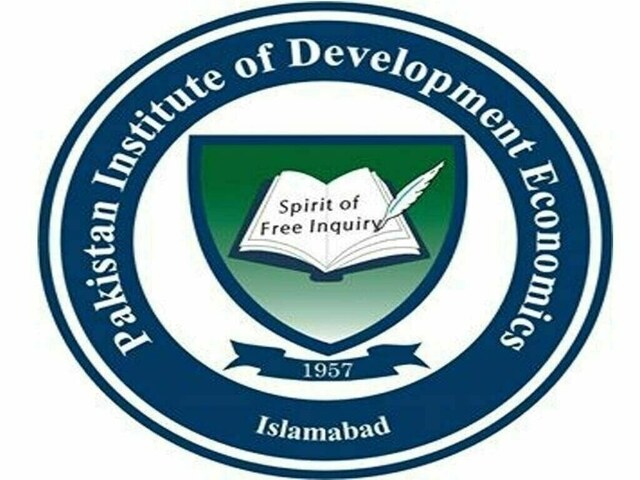By Tahir Amin
Copyright brecorder

ISLAMABAD: The Pakistan Institute of Development Economics (PIDE) on Wednesday unveiled key findings from the Pakistan Panel Household Survey (PPHS) 2024, marking a significant milestone as the country’s only long-term, nationally representative household survey tracking economic and social changes over more than two decades.
The seminar titled “Pakistan Panel Household Survey (PPHS): Key Insights and Implications for Policymaking” was held at PIDE, with Dr Shujaat Farooq, Dean of Research, presenting the findings. The event was moderated by Dr Karim Khan, Dean Academics.
Dr Farooq reported that 76percent of households initially surveyed in 2010 were successfully re-tracked in 2024, underscoring the robustness of this longitudinal research.
Surveys underrepresent top-income brackets: Actual inequality in Pakistan likely higher, says World Bank
Supported by RASTA-DDR and conducted in partnership with the Pakistan Bureau of Statistics, the PPHS expanded its reach from 16 to 30 districts, now covering major urban centres including Lahore, Karachi, Hyderabad, and Peshawar.
The 2024 round surveyed 8,621 households nationwide and was conducted entirely digitally through tablets, enabling real-time data monitoring and enhanced accuracy.
The latest survey introduced new modules examining learning poverty, care work, disability, financial literacy, and detailed child well-being and parenting, alongside updated consumption categories such as “eating out.”
Education data highlighted both improvements and persistent challenges. While literacy rates have risen, 34percent of students in grades 3 to 8 were unable to solve division problems at grade 2 level, indicating severe learning deficits.
Financial constraints remain a key reason for school dropout, cited by 71percent of parents. Dropout rates at middle and matriculation levels stood at 34percent and 21percent respectively, reflecting ongoing educational inequalities. Labour market statistics showed mixed trends.
Male labour force participation fell slightly from 80percent to 78percent, while female participation increased from 23.7percent to 26.9percent over 14 years.
However, women remain largely confined to agriculture and informal sectors, with limited occupational mobility and minimal shift towards higher-value employment.
The survey revealed some progress in intergenerational mobility. University graduates now comprise 9percent of the younger generation, compared to just 1percent of their fathers.
Ownership of inherited homes rose from 58percent to 81percent, with half of respondents perceiving themselves as financially better off than their parents.
Health indicators showed notable improvements. Antenatal care coverage rose by 28.5 percentage points since 2001 to 80.9percent, and skilled birth attendance increased by 69.5 points to 88.5percent. Home births declined sharply to 11.6percent.
Tetanus toxoid vaccination coverage also improved by 35 points to 72.3percent. However, regional disparities persist, particularly in Balochistan, where maternal healthcare remains inadequate.
Child malnutrition rates improved, with stunting declining from 60percent to 43percent and underweight children dropping from 50percent to 33percent, although wasting showed a slight increase. Food insecurity remains widespread: only 19.5percent of households can always afford desired meals, while 30percent sometimes skip three meals a day. Over 60percent of households identified inflation as the biggest shock to their livelihoods.
The survey’s poverty analysis using the Cost of Basic Needs method puts the national poverty rate at 30.5percent, with rural poverty at 36.6percent and urban poverty at 17.8percent. Rural poverty has declined from 46.1percent to 37.5percent, and urban poverty from 41.0percent to 23.4percent. Yet income inequality has widened, as consumption by higher-income groups rose faster than that of poorer households. The report suggests that better inflation control could have reduced poverty by about seven percentage points.
Social protection coverage also expanded. Between 22percent and 23percent of households now receive support from programmes like Benazir Income Support Programme (BISP) and Zakat, up from 10percent in 2010, and around 10percent to 11percent access microfinance. Additionally, some 60percent of households report charitable giving, primarily through informal channels.
Dr Karim Khan lauded the survey’s methodological rigor and its precise tracking of households, including split families, calling PPHS a valuable resource for policymaking aimed at social and economic inclusion. The seminar concluded with identified policy priorities: reducing learning poverty, expanding women’s labour participation, strengthening social protection, improving job quality, and investing in child well-being infrastructure such as playgrounds and libraries. PIDE announced that the PPHS 2024 micro data and a detailed technical report will be released soon to support further research and evidence-based policy formulation.
Copyright Business Recorder, 2025